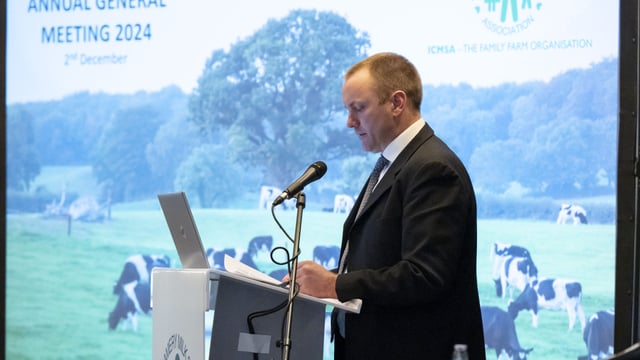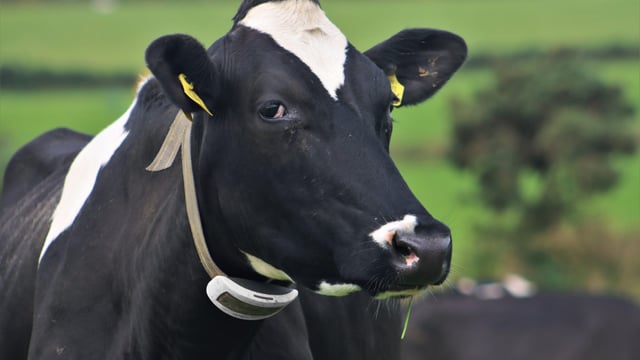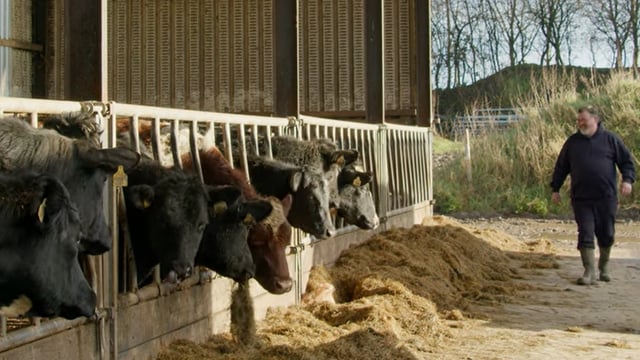22 cases of Schmallenberg virus recorded in 2024 - DAFM
The rate of Schmallenberg virus (SBV) cases in Ireland grew by 2,200% in 2024, in comparison to figures reported in 2023, the Department of Agriculture, Food and the Marine (DAFM) indicated.
According to a spokesperson from DAFM, 22 cases of SBV were recorded nationally in 2024, 12 of which were identified among cattle herds, while the remaining 10 were found in sheep flocks.
This follows the detection of SBV after several investigations into milk drop and diarrhoea in herds across the country in the summer and autumn of 2024, which indicated virus circulation, DAFM supported.
This follows the total testing of 369 cattle and 84 sheep for the disease, at General Virology Division, Backweston, Co. Kildare, last year.In comparison, there was only a single case of bovine SBV identified in 2023, DAFM confirmed.
Schmallenberg virus
Schmallenberg virus is a viral midge-borne disease that affects ruminant animals, but has been found to be particularly evident among cattle and sheep.
It was first recognised in Germany and the Netherlands during the summer of 2011, and the first Irish case was subsequently detected in October 2012.
According to DAFM, the virus exhibits "mild symptoms" in infected cattle, which are typically transient in nature, including fever, drop in milk yield and diarrhoea. In sheep, "few, if any" signs are reportedly exhibited.
However, if ruminant animals should become infected when pregnant, it can lead to abortion, stillbirth and birth deformities in the foetus, as well as potentially lower rates of immunity among the offspring should they survive birth.
Schmallenberg can cause a wide variety of birth deformities, particularly in limbs (arthrogryposis), spinal curvature (scoliosis), torticollis (twisted neck), shortened lower jaw (brachygnathia inferior), and domed skulls (hydranencephaly).
Warning: Graphic image below
A spokesperson for DAFM said: "To date, birth deformities associated with SBV have been confirmed in counties Galway, Offaly, and Cavan, affecting early lambing sheep flocks.
"Anecdotal evidence from Europe suggests that SBV exposure in utero has also been associated with the birth of apparently normal calves and lambs with reduced viability, i.e although born normal, they showed increased morbidity to other diseases and had lower growth and survival rates.
"Therefore, apart from the visible losses of dead or deformed calves and lambs, advisors and farmers need to be aware of this potential hidden susceptibility, and neonatal husbandry, colostrum, biosecurity really need to be optimised to prevent further losses on affected farms," the spokesperson added.
SBV is not a notifiable disease, however, the department's Regional Veterinary Laboratories (RVL) have emphasized the value of submitting deformed calves and lambs for testing, in response to the recent surge in SBV detections nationally.
This will, it said, ensure accurate surveillance of the disease' incidence in Ireland, and will additionally help monitor the rate of Bluetongue virus in circulation, which can affect similar deformities.
According to the UK's Animal Plant and Health Agency (APHA), which has reportedly been offering free testing for SBV infections since 2024, 233 cases of the virus were detected in England and Wales, during the four-month period leading up to the end of March 2024.
This is reportedly higher than the total number of SBV infections recorded by APHA in 2023 and 2022 collectively.
While the exact reasons for this remains "unknown" to APHA, potential explanations include "varying immunity of animals, awareness of vets about the free testing availability, or not testing herds or flocks where there is a familiarity with the virus from previous diagnoses".
In addition to impacted offspring being aborted, stillborn, or requiring euthanasia on welfare grounds upon birth, some infected lambs and calves were found to have displayed "lesions" on limbs and "cavitating lesions" on brains, following autopsies.












